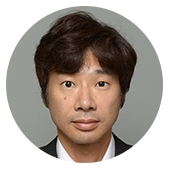"The prime minister took materials about Okinawa home and read them late into the night," says Eda, who served as Hashimoto's executive secretary. "I wanted to tell him to focus on other things too. I felt that all he could think about was how to lighten the prefecture's burden regarding US bases."
The superiors of the three rape suspects were refusing to hand them over, based on a mechanism of the Bilateral Status of Forces Agreement. A massive protest drew 85,000 locals, who intensified their calls for the reorganization and scaling down of US military facilities in the prefecture. The Futenma base was a real sticking point. It has often been dubbed the most dangerous airstrip in the world due to its proximity to a densely populated area.

In late February, just weeks after taking office, Hashimoto and US President Bill Clinton were scheduled to hold a summit in Los Angeles. In the lead-up to the meeting, Okinawa Governor Ota Masahide requested to speak with the prime minister directly. "His main message was that the people of Okinawa want the prime minister to ask the US to return Futenma," he recalls.
Eda says the Foreign Ministry was opposed to the idea. "It said the Prime Minister would be ridiculed for knowing nothing about security affairs by making such a proposal in his first summit with the US president."
US reluctant to cede land
Okinawa is the most advantageous location for the US Marine Corps to deploy quickly in East Asia, including the Korean Peninsula, Taiwan and the South China Sea. Consequently, the prefecture is home to about 70 percent of US military facilities in Japan. Eda says the Japanese government believed there was no way the US would return Futenma, given its strategic importance.
In fact, Hashimoto's summit remarks, prepared by the Foreign Ministry, didn't even mention the base. In hindsight, they probably should have.
"Clinton directly asked the prime minister if he had anything to say about the Okinawa issue," Eda remembers. "Right then and there, Hashimoto decided to tell the president that although he realizes the sensitivity of the problem, the local people want Futenma Air Station back."
"I remember it clearly," he continues. "After the meeting, Hashimoto immediately told me that he had brought up the base. I then told him the summit had been a success – purely based on the fact that he had discussed Futenma, a term hitherto unfamiliar to President Clinton."

Clinton instrumental
Just three days later, Clinton ordered Secretary of Defense William Perry, who served in Okinawa after World War Two and had a deep understanding of the issues regarding Futenma, to consider returning the site to Japan. The agreement between the two central governments came on April 12, on condition that the helicopter base be relocated within the prefecture.
In a press conference, Hashimoto said, "Futenma Air Station will be completely returned within the next five to seven years." Eda recalls the events of the time as if they were yesterday. "The prime minister immediately phoned Governor Ota to tell him what we had agreed with the US. He also asked him to help find another location, and redevelop the Futenma site after the US Marines leave. Ota released a statement saying he would fully cooperate. At that time, it looked like the relocation process would go smoothly."

Over the past two and a half decades, the reality has been quite different. Although the US did agree to return the Futenma site to Japan, it has refused to accept any impediment to military operations in Okinawa.
Vote reflects overwhelming opposition
The Japanese government has stuck to the plan for a replacement facility on the Henoko coast in the city of Nago. In 2006, a plan to build two runways took shape, but opposition to the required landfill work is fierce due to fears it will destroy the local environment. The people of Okinawa voted against the plan overwhelmingly in a February 2019 referendum.
The chasm between the central and Okinawa prefectural governments continues to widen. A report published last November by the Center for Strategic and International Studies, a US think tank, said the project continues on bumpy ground and seems unlikely to ever be completed.
Watch Video 12:33
Hashimoto died in 2006. "At the time, both the prime minister and I would never have imagined a quarter of a century would pass without the return being achieved," Eda says. "Looking upon the current situation, I wonder what he would say."

